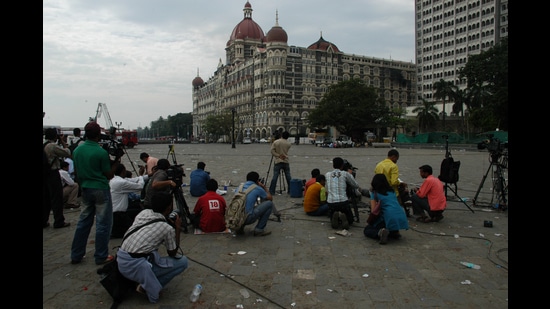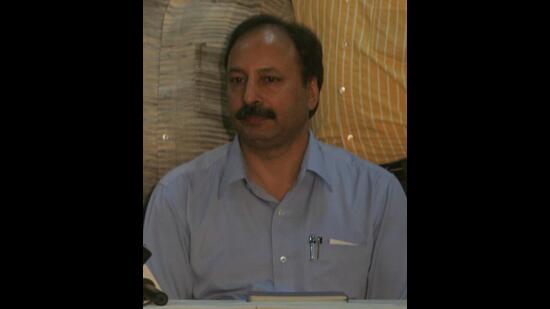Excerpt: Bombay After Ayodhya by Jitendra Dixit
This extract from a contemporary biography of the city points out that, 14 years after the 26/11 attacks, Mumbai’s security systems still aren’t as robust as they should be
Coastal Security

The attacks exposed many chinks in Mumbai’s security system and counterterrorism mechanism. The biggest question pertained to coastal security, which failed to stop the intruders.
Maharashtra has a coastline of 720 kilometres, out of which 114 kilometres surround Mumbai. It was for the second time that death came to the city via the sea. The RDX for the 12 March 1993 serial blasts had also been smuggled in boats. The Ram Pradhan Committee, appointed by the Maharashtra government to probe into lapses in the response by security agencies during the 26/11 attacks, made damning remarks about the complacent attitude of the government towards the intelligence alerts received. In its findings, the committee noted that despite six alerts issued between August 2006 and April 2008 by the Intelligence Bureau about a seaborne terrorist attack, nothing significant was done to mitigate the threat. There was a lack of coordination between Mumbai Police and the Coast Guard.

One year after the attacks, the then Mumbai police commissioner, D Sivanandhan, invited me for a ride on one of the newly bought speedboats at the Gateway of India. He proudly showcased the measures taken by the police to avert any further attacks. 20 Sealeg boats, costing ₹20 lakh each, and 20 amphibian vehicles, costing ₹40 lakh each, had been purchased. These boats were expected to chase and intercept infiltrators, and patrol the coastline. 450 policemen were deployed for coastal security, and four marine police stations were set up.
In 2015, I did a follow-up story to check the efficiency of the initiatives undertaken during Sivanandhan’s tenure. I was shocked to find that many of the boats had gathered dust and had become dysfunctional. Some needed major repairs, while spare parts of other boats were unavailable. The maintenance contract of the Sealeg boats had ended with the company. In August 2010, a constable named Ramesh More deployed on a patrolling boat had drowned. An audit report by the Comptroller and Auditor General (CAG) revealed that 57 per cent of the staff deployed for coastal security didn’t know how to swim. Dhananjay Kulkarni, the then spokesman of Mumbai Police, responded to my report saying that efforts were being made to train the cops.
The CAG report also exposed a 63.97 per cent deficiency in the number of personnel assigned for coastal security in Mumbai. Coastal security has three layers. The first is manned by Mumbai Police, while the next two layers are assigned to the Coast Guard and the Navy.
When I shared my observations with KP Raghuvanshi, former ATS chief, he was riled. “It was a knee-jerk reaction after the 26/11 attacks. Just procuring boats is not enough. You need to arrange a support system as well to sustain it. Was adequate provision for the supply of diesel to the boats made? Were workshops set up to repair the boats? They are gathering dust due to a lack of repairs. Many policemen have seasickness. Many don’t know how to swim. If they can’t save their own life, how will they save others?” Raghuvanshi asked.
One positive development, though, was the strengthening of the on-ground response to future attacks. Mumbai was now equipped with three sets of commando forces. The QRTs were set up under each of the five regional additional commissioners of Mumbai Police. Another commando unit named Force One reported to the state police. The NSG also opened its west India hub in Mumbai to reduce response time. In a 26/11-like situation, the QRT is expected to be the first responder, followed by the other two.
A friend working for one such agency informed me that the aftermath of 26/11 saw increased multi-agency coordination. However, concerns remain over their ability to take swift action after intelligence is received.
Bulletproof Jackets Need ‘Proof’

Wearing a bulletproof vest doesn’t necessarily prevent a bullet from piercing the body, because different bulletproof jackets are resistant to different kinds of bullets. One may be effective against revolver or pistol bullets, but not an automatic rifle. Minutes before the ATS chief, Hemant Karkare, was killed, he was shown on TV wearing a bulletproof jacket. A report revealed that the quality of jackets that he and other policemen wore that night was not capable of protecting against shots fired from AK-47 rifles, but only pistol or revolver bullets, that too fired from a distance of 30 feet. These vests had been in use since 2004.
Many years later, an RTI application revealed that Karkare’s jacket had been thrown away by a ward boy at Sir J.J. Hospital. Anil Galgali, the activist who filed the RTI, believes that if Karkare’s vest had been examined, it would have exposed a scam in the procurement of the vests.
10 years later, in 2018, the Maharashtra Police received 4,600 bulletproof vests worth ₹17 crore. However, 1,432 of these jackets failed to protect from the test bullet fired from AK-47 rifles. After the tests, the jackets were returned to the manufacturers.

Nowadays, one can find door-frame metal detectors at major local railway stations and baggage-screening machines at outstation train stations — both measures seem nothing more than a mockery in the name of security. Metal detectors are seldom used to check passengers entering the railway premises, and baggage screeners are not used to check the luggage of all passengers. Are these the measures we rely on to avert any major attacks in the future?
A consolation is that most of Mumbai is now under CCTV surveillance, which can help detect crime, gather evidence and, in some cases, even prevent harm.
All Access.
One Subscription.
Get 360° coverage—from daily headlines
to 100 year archives.



HT App & Website






